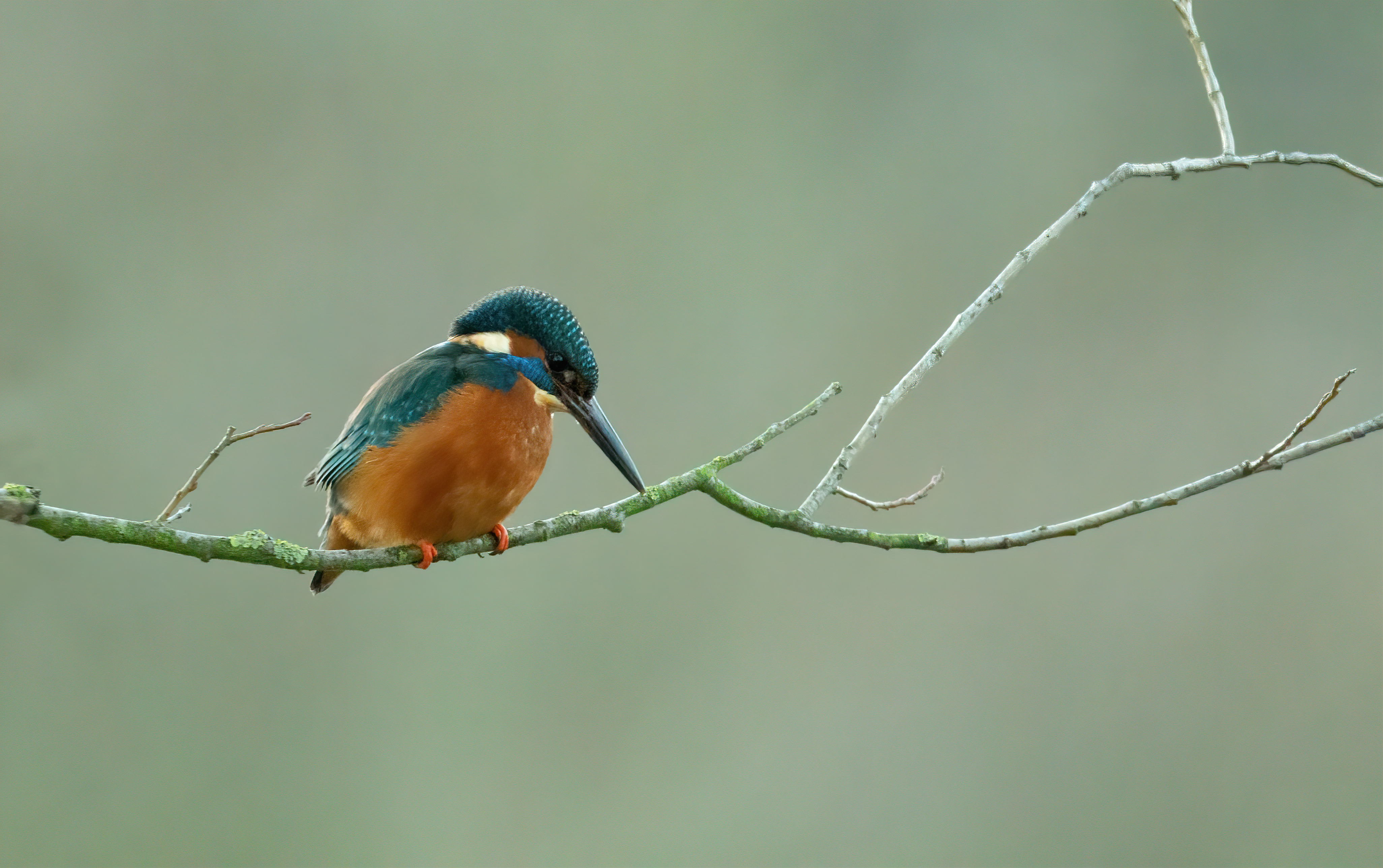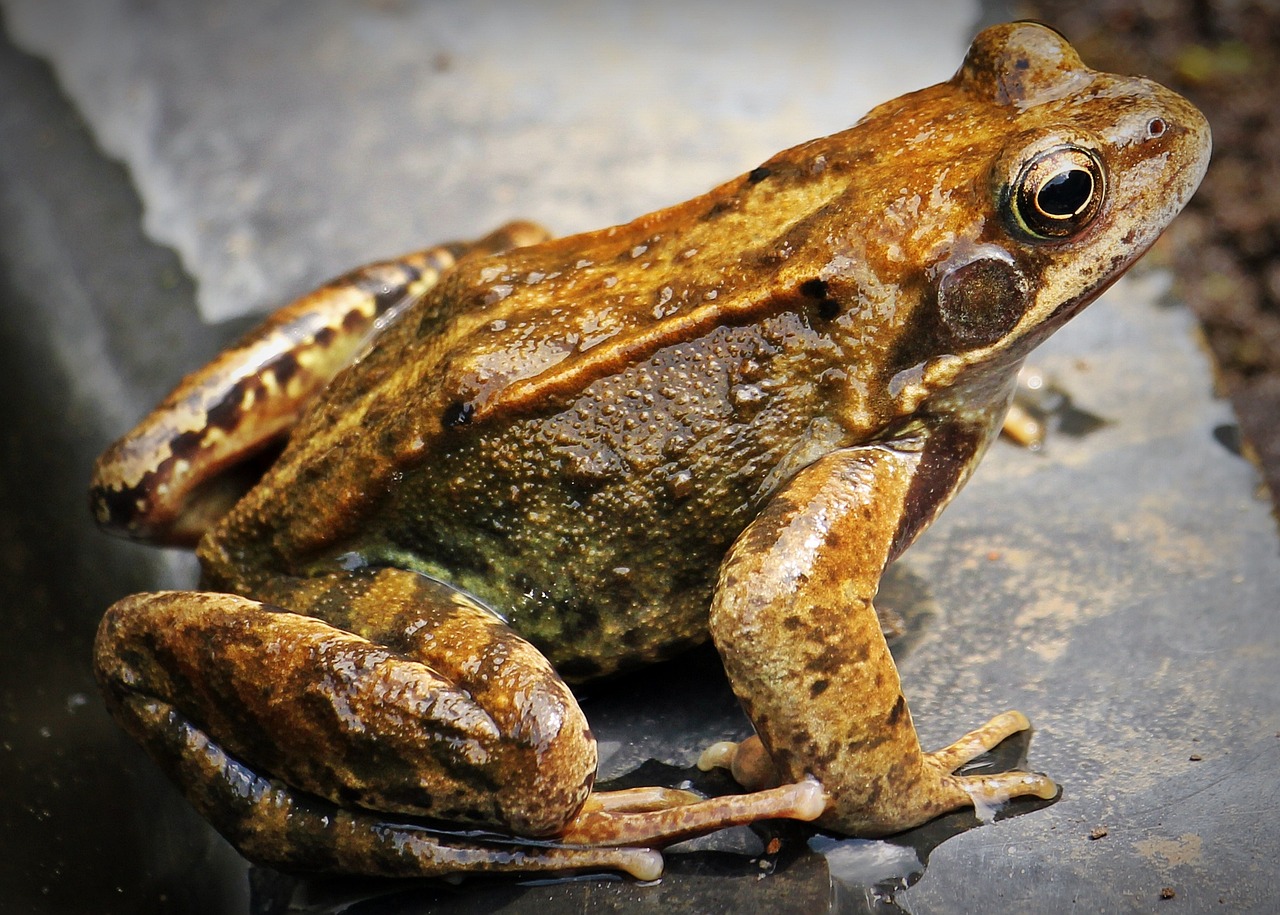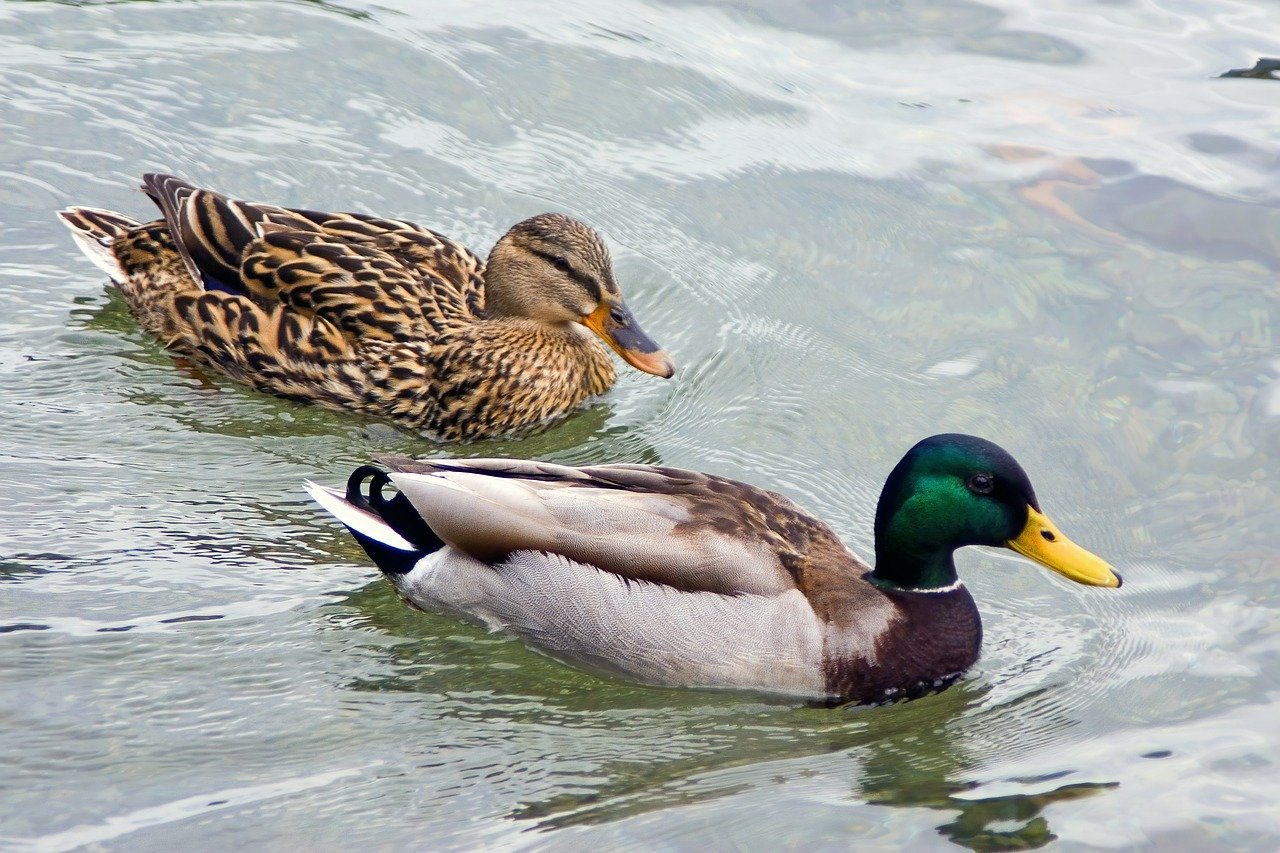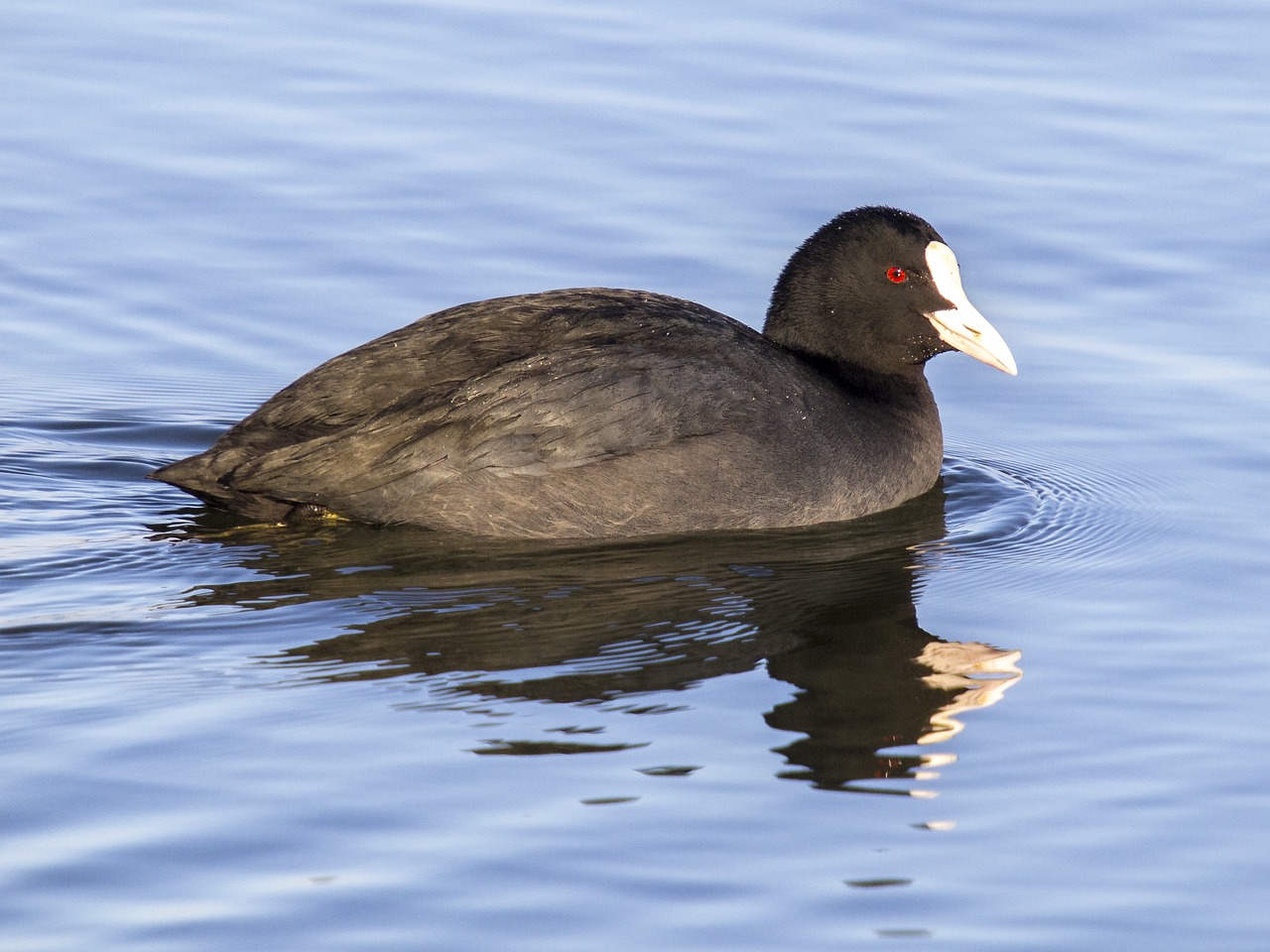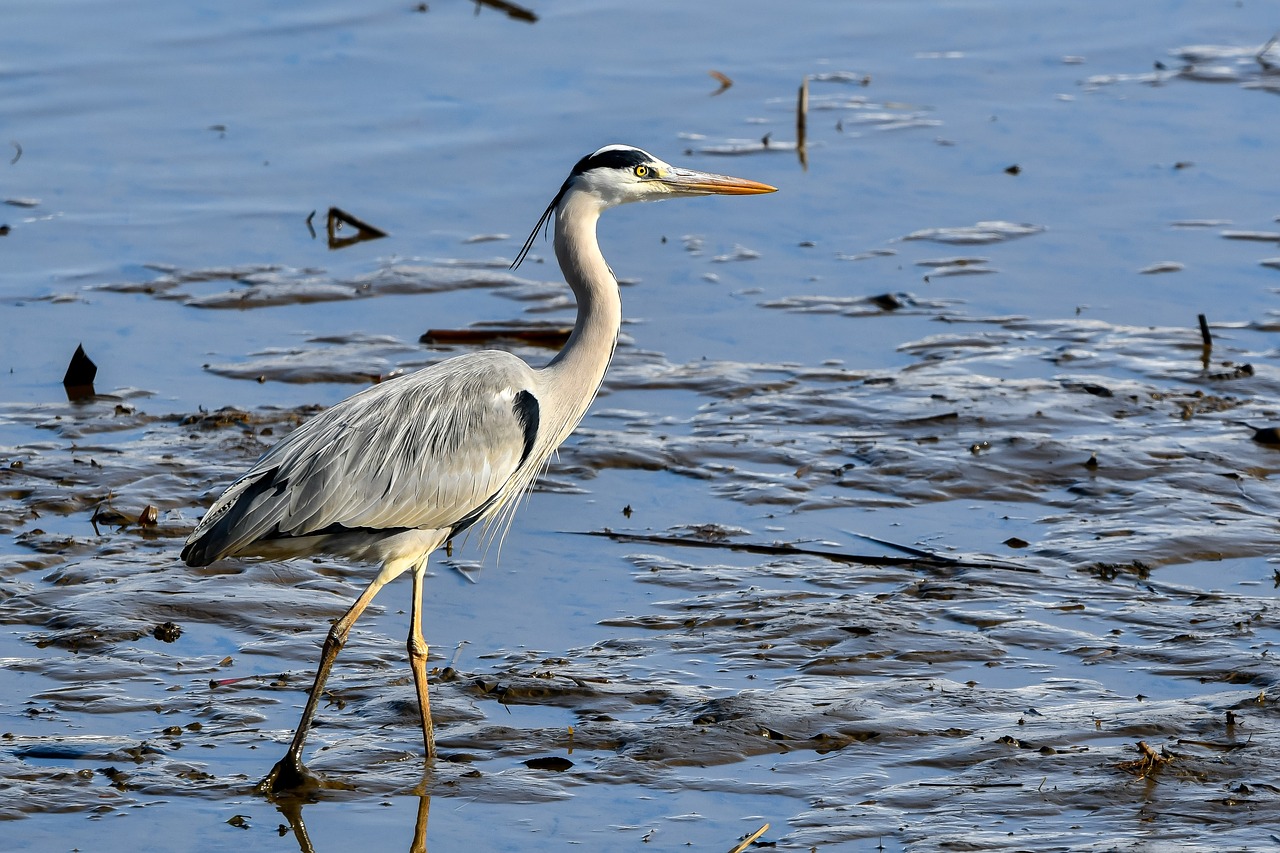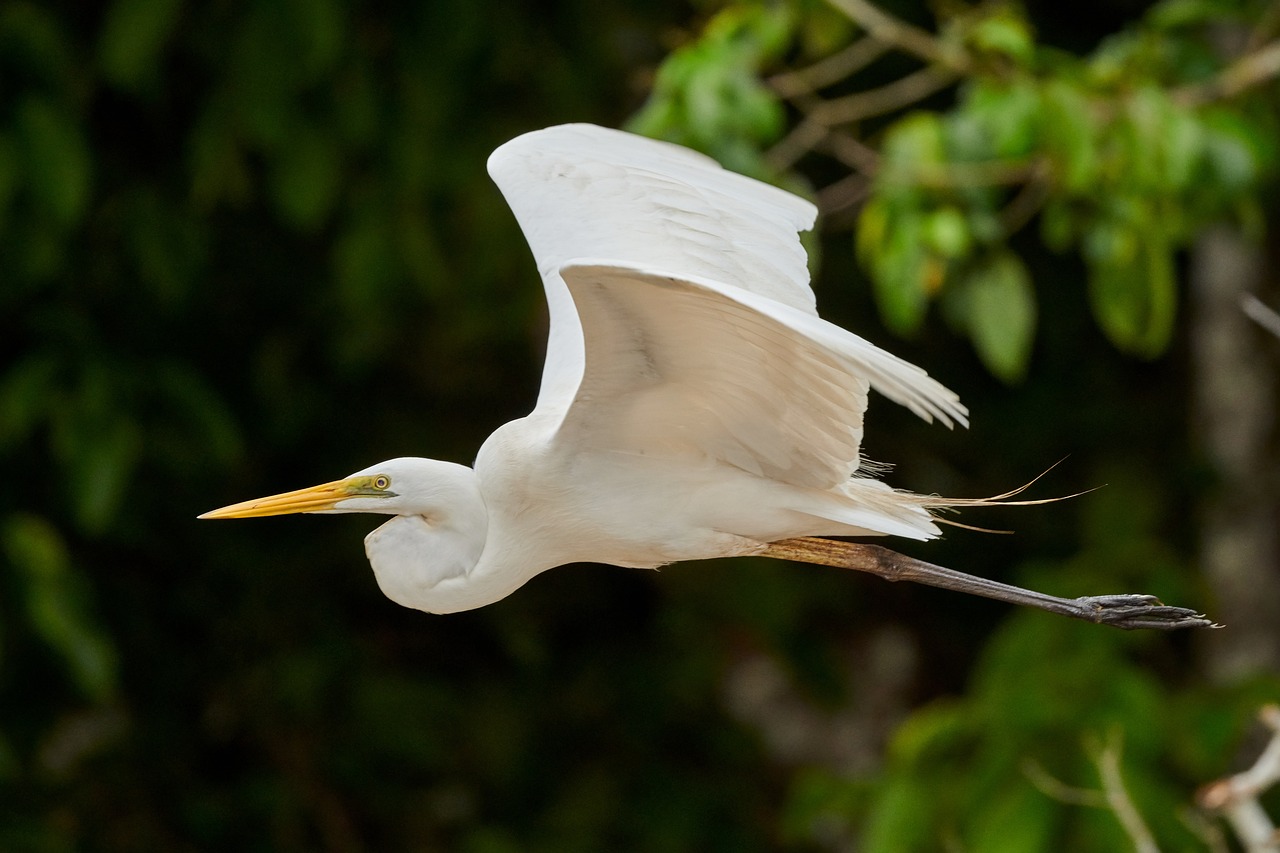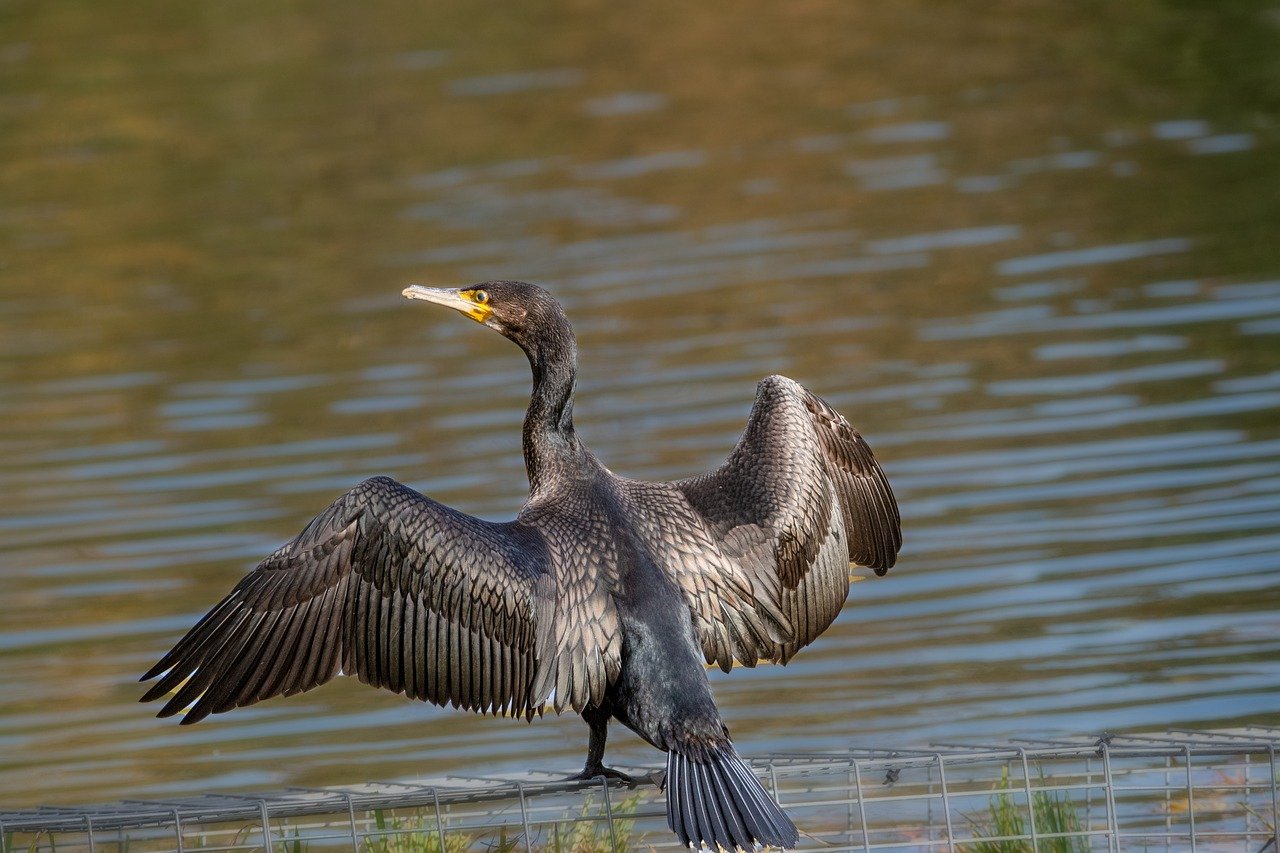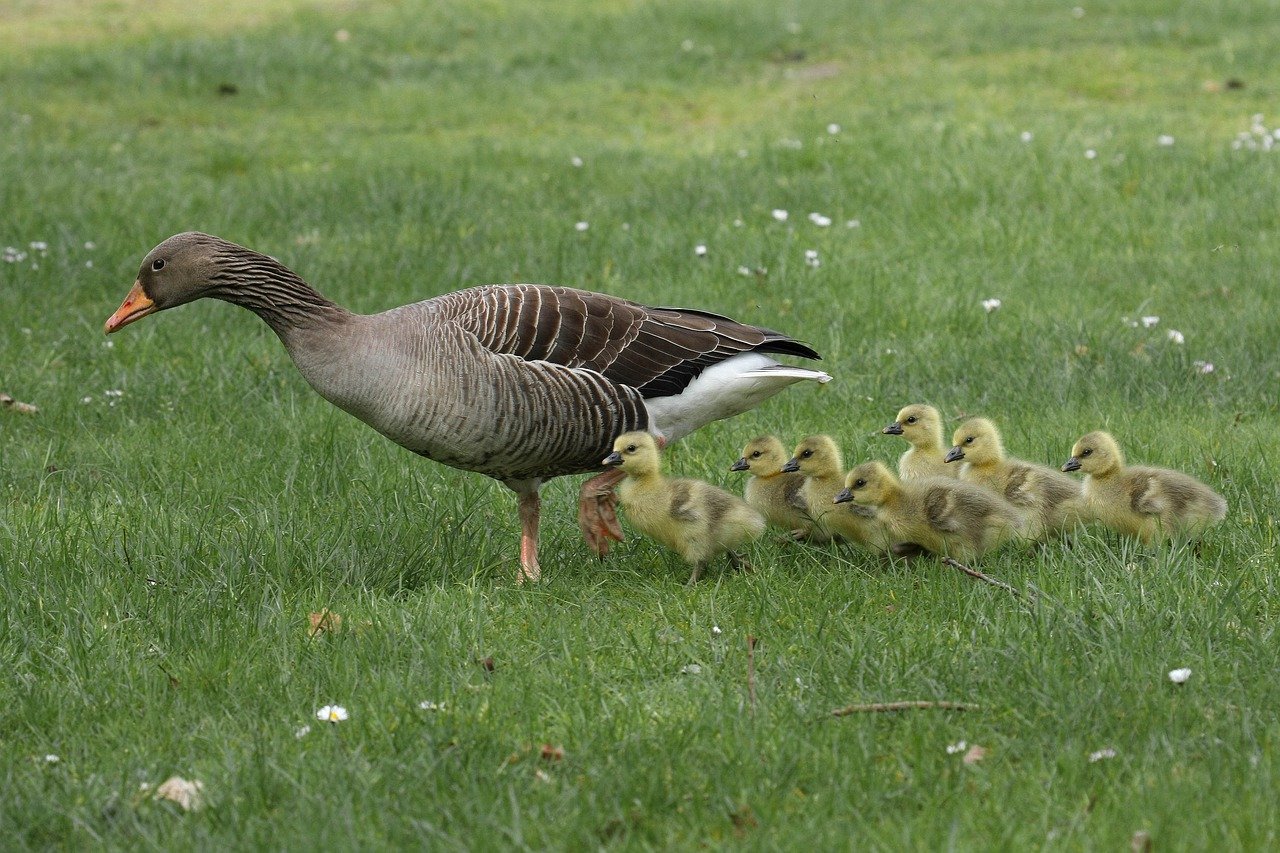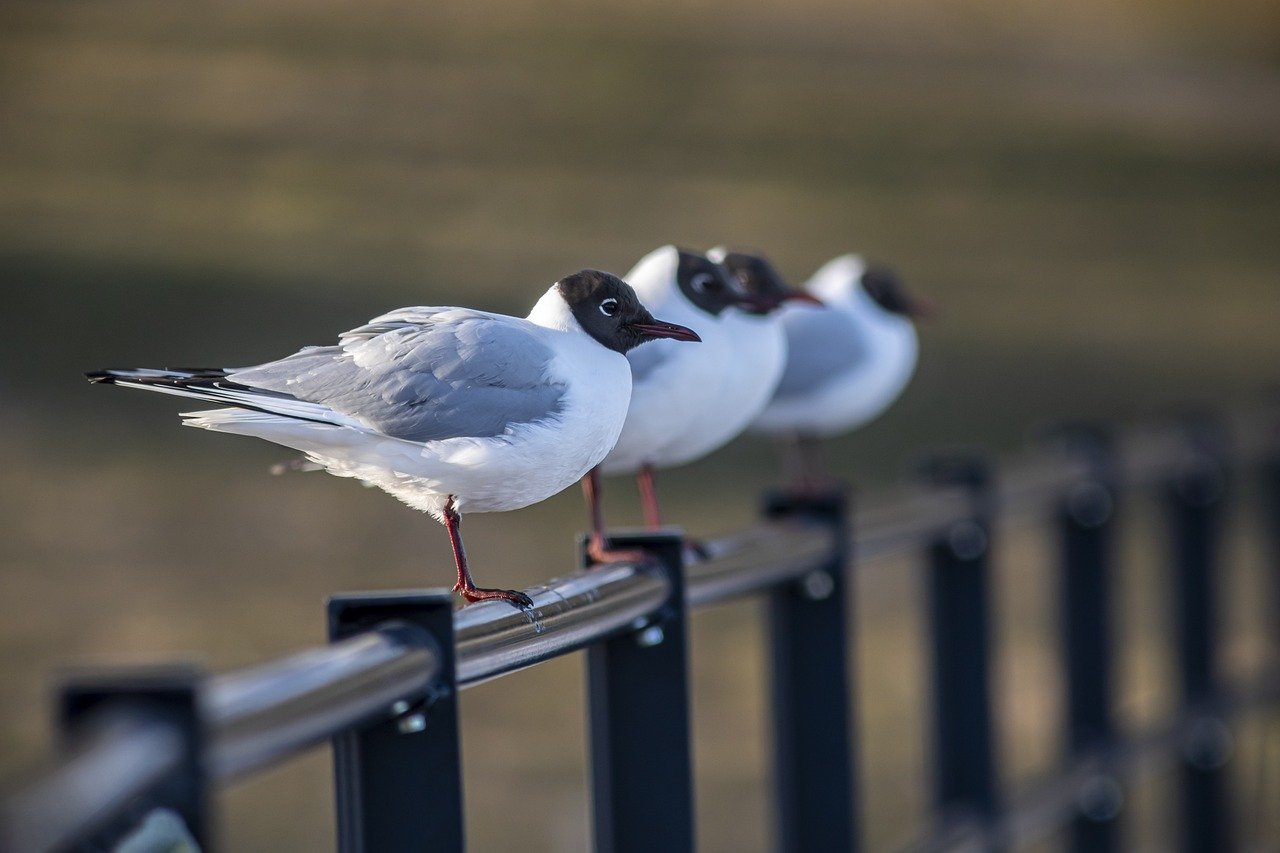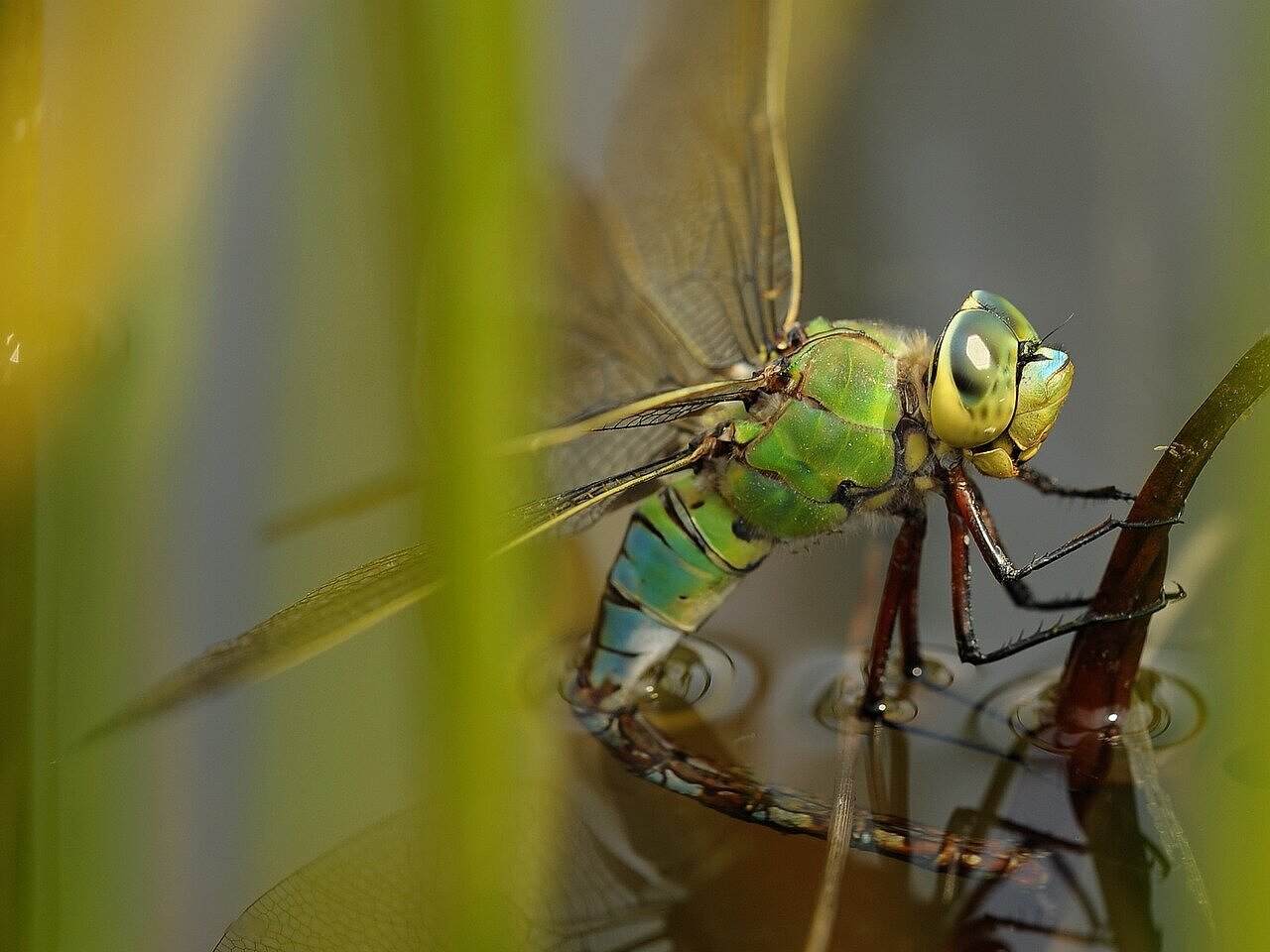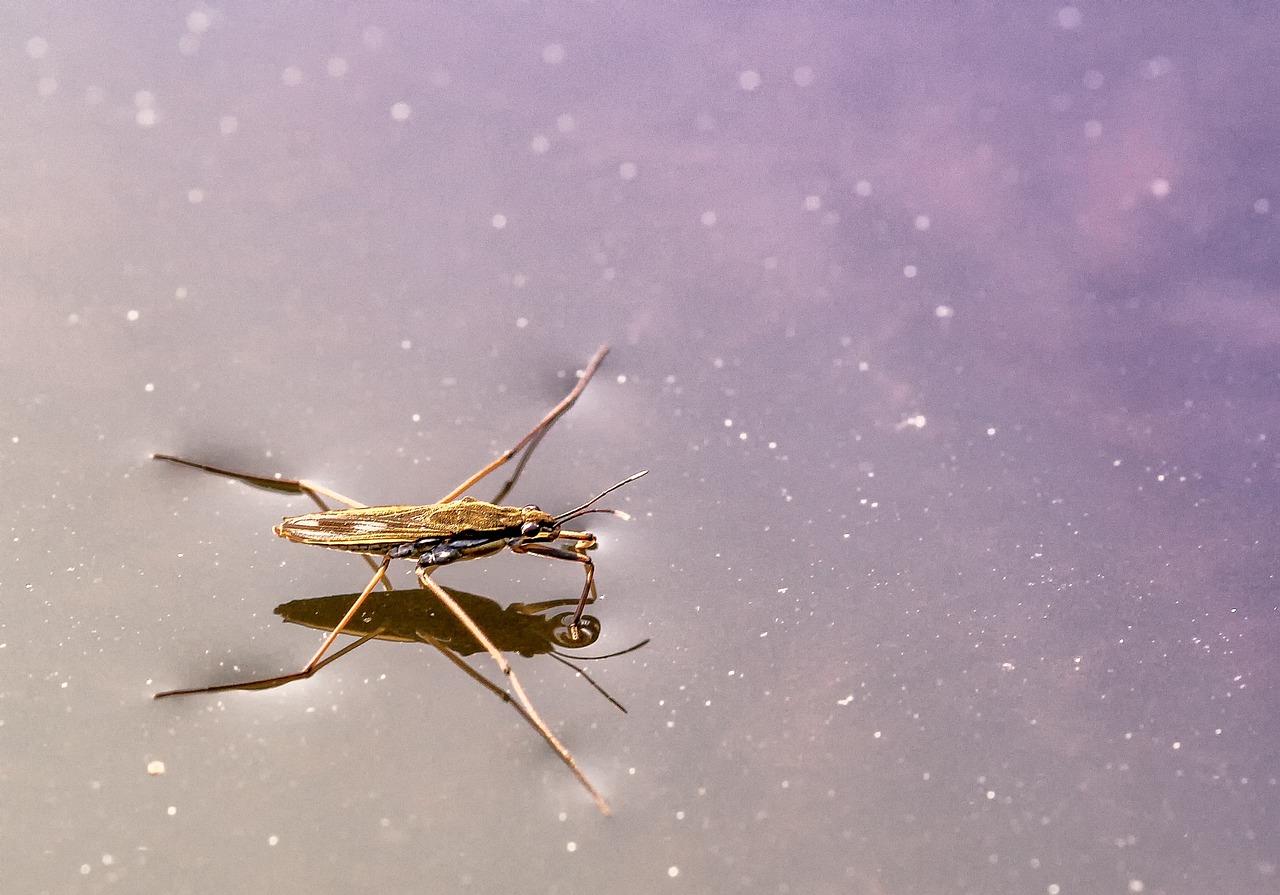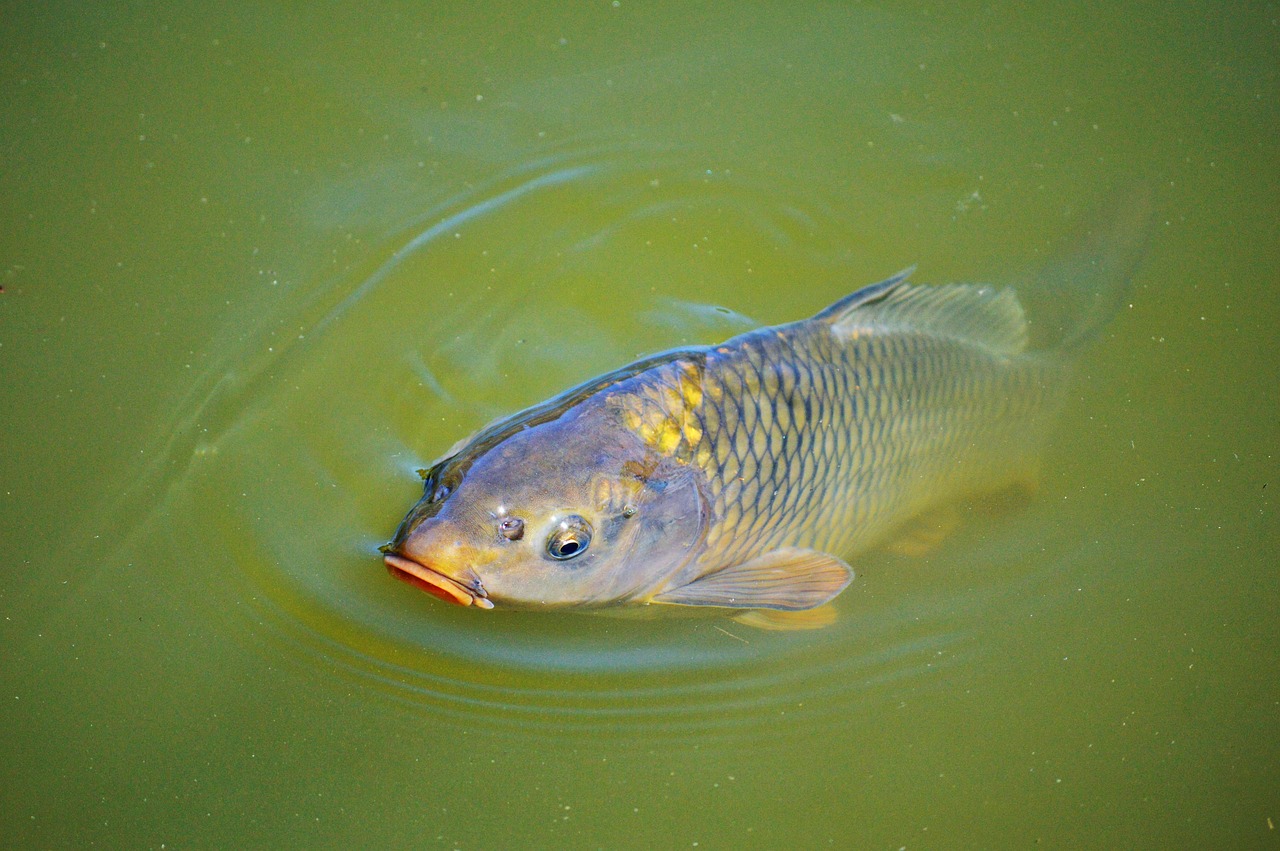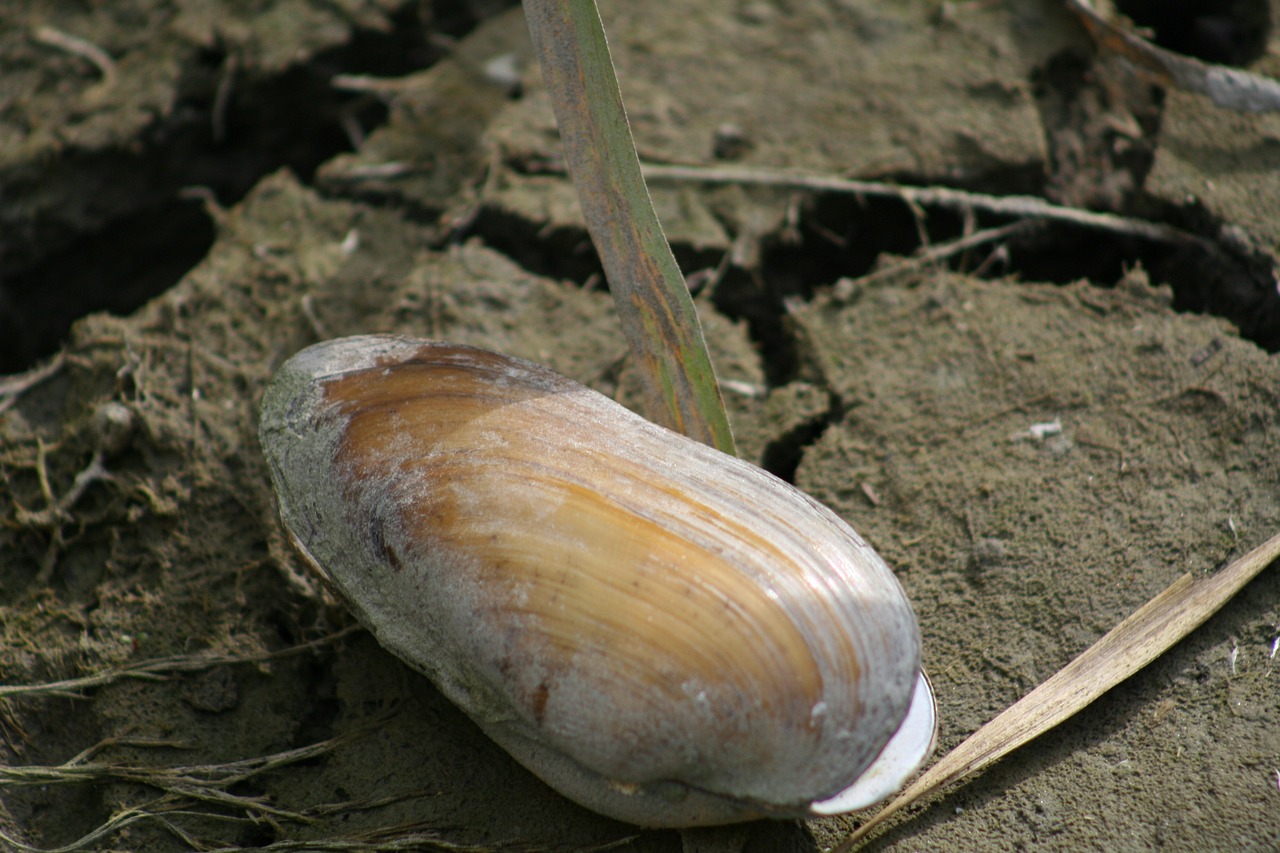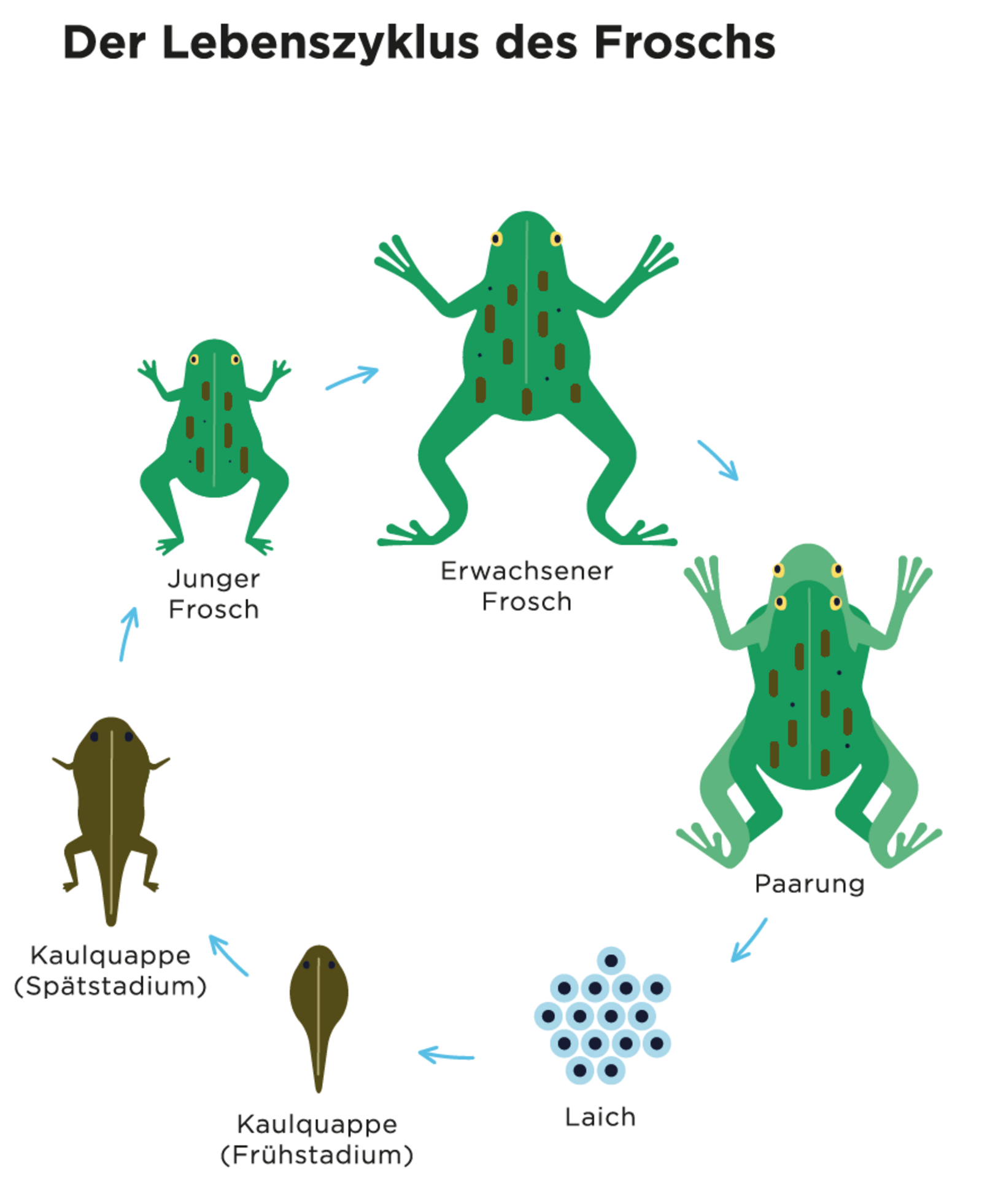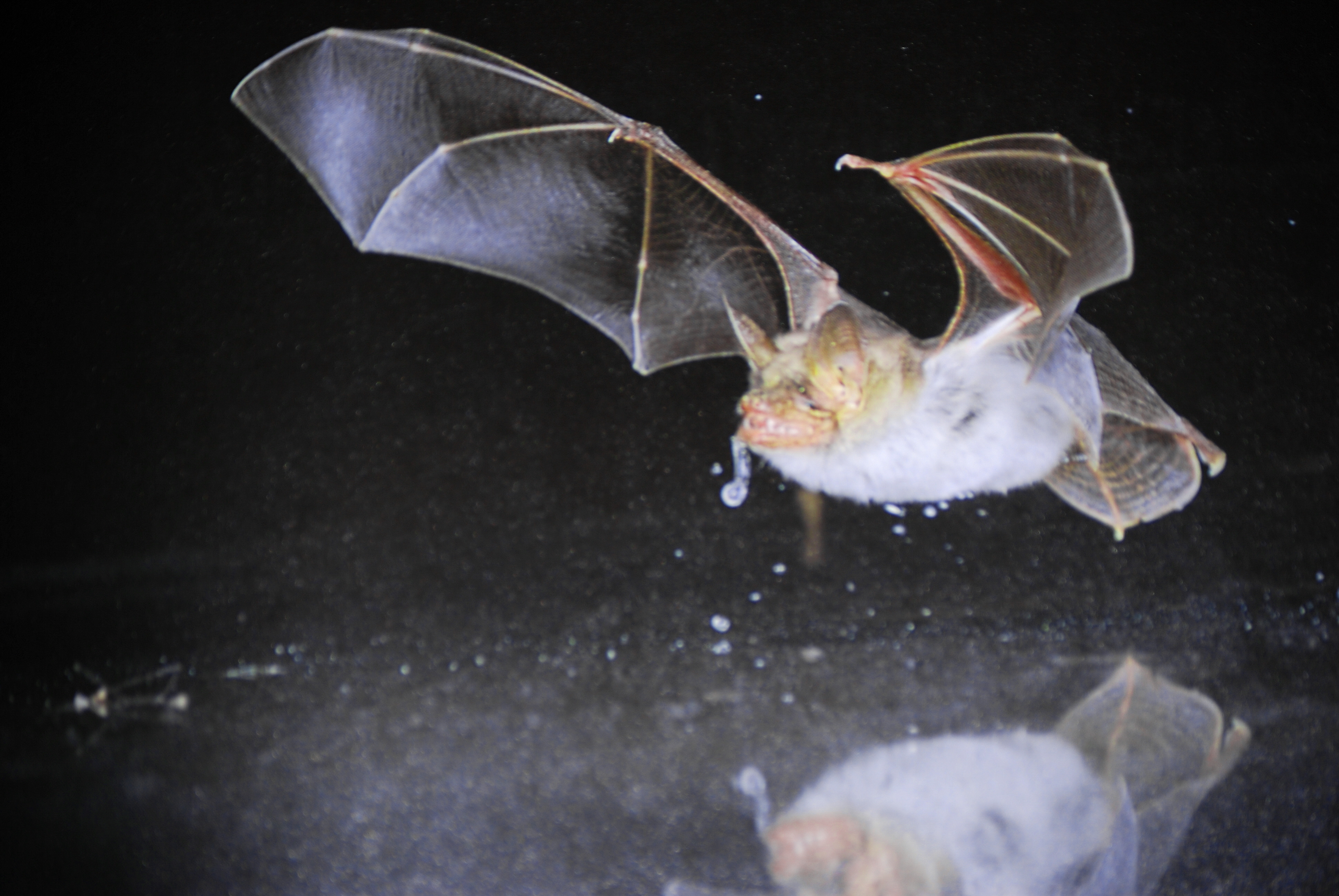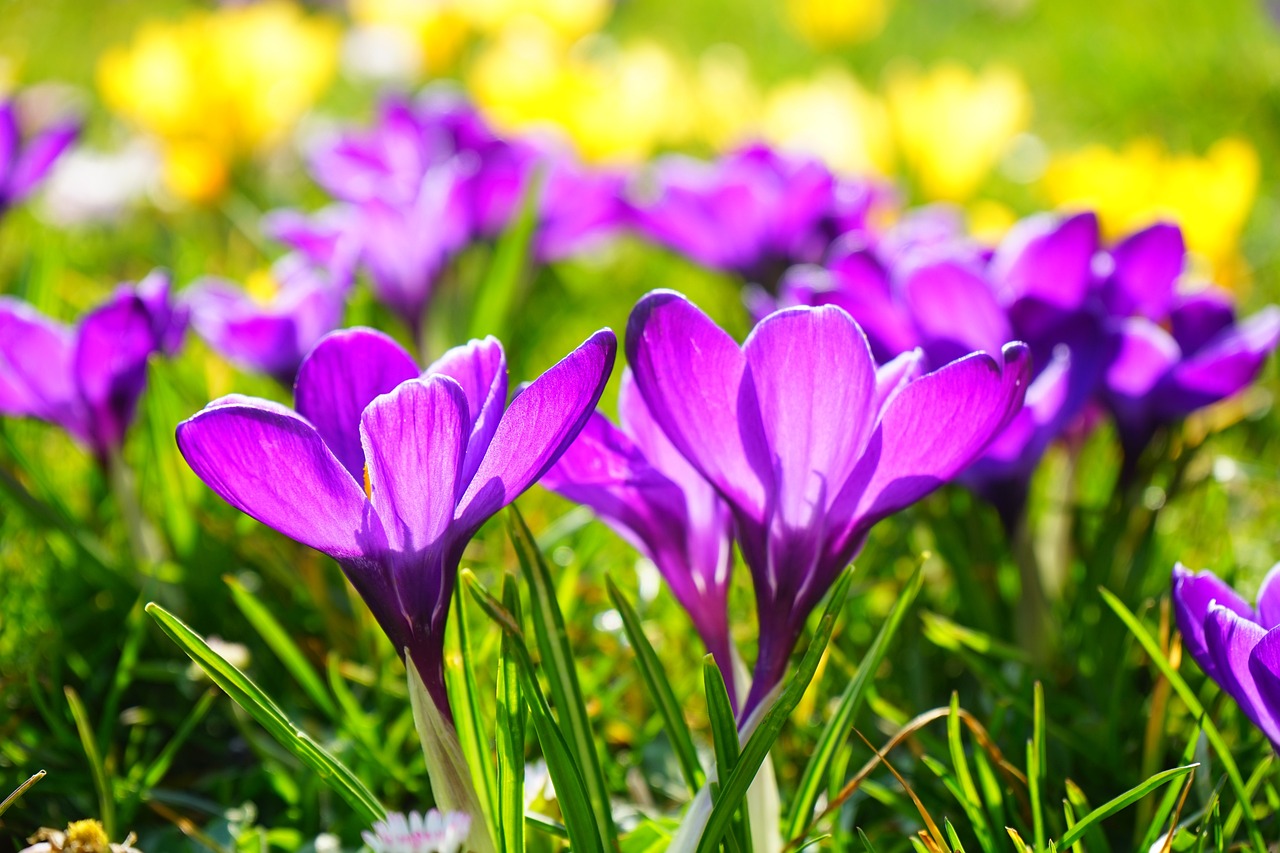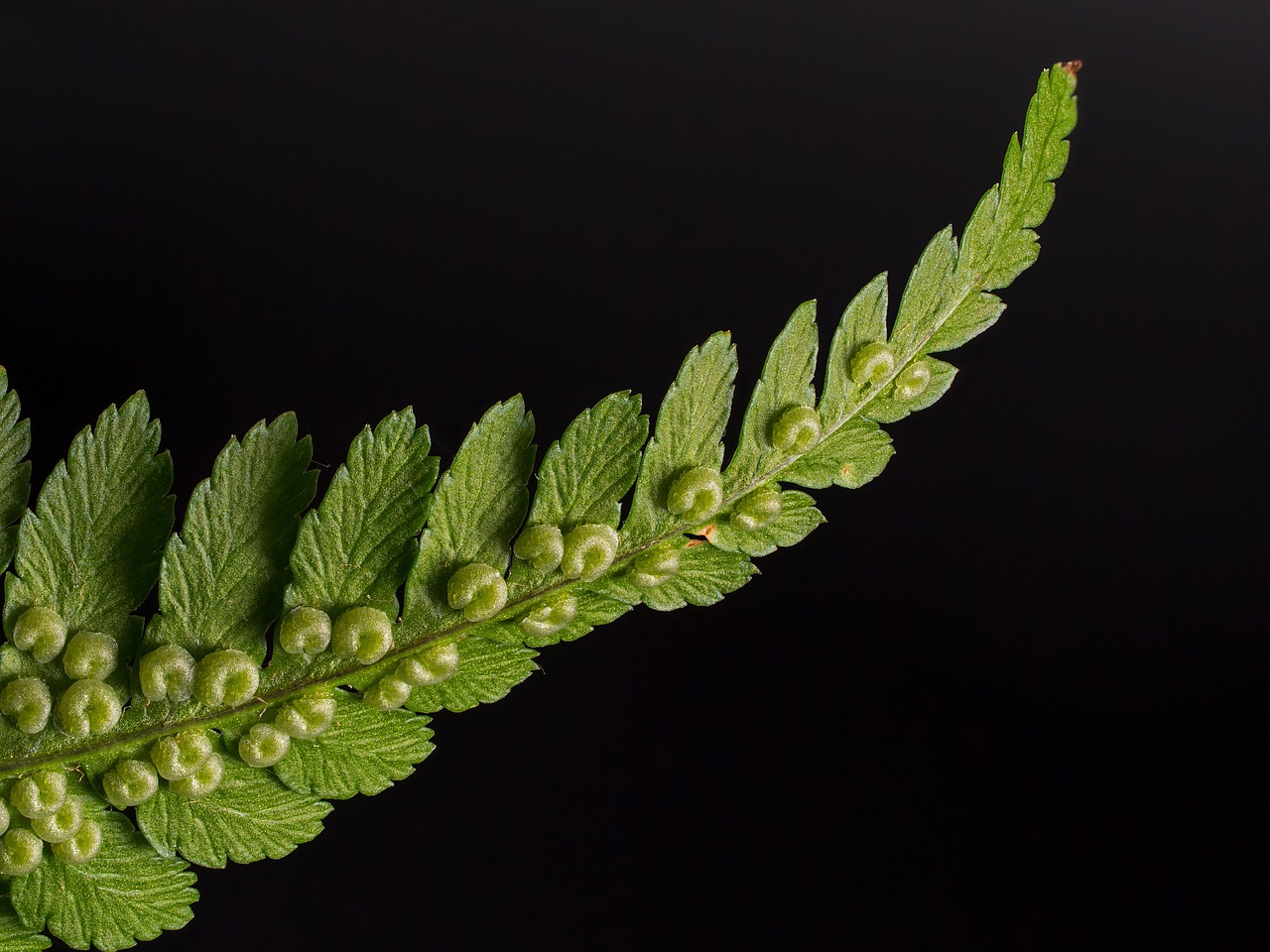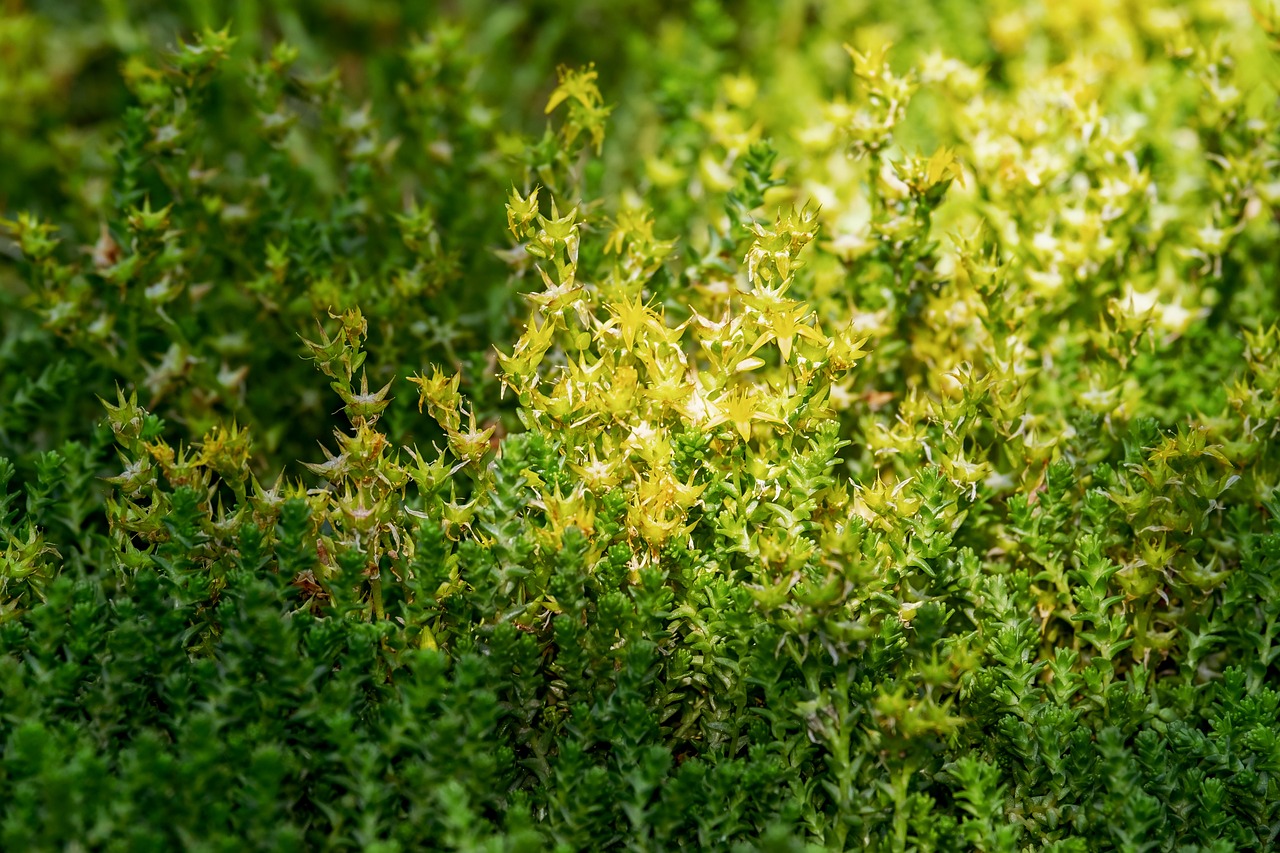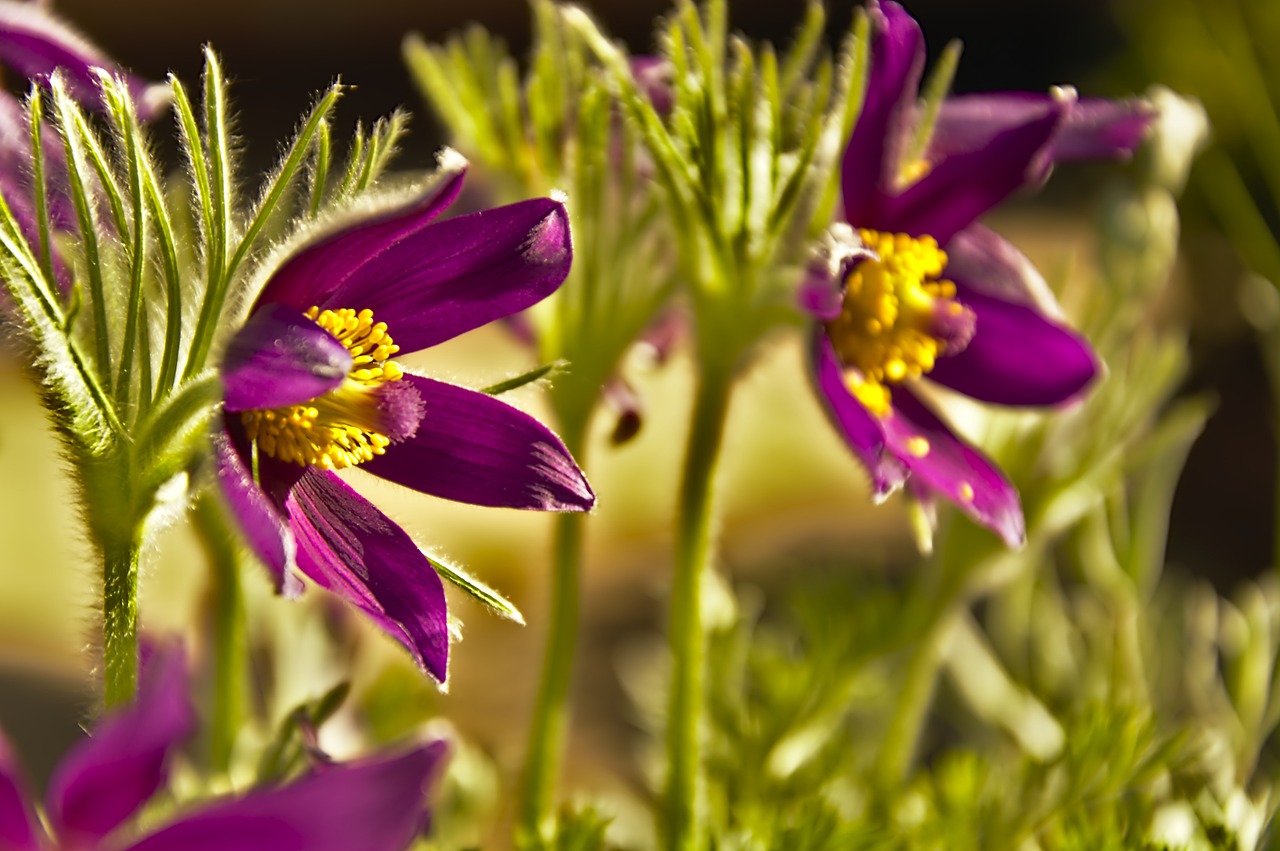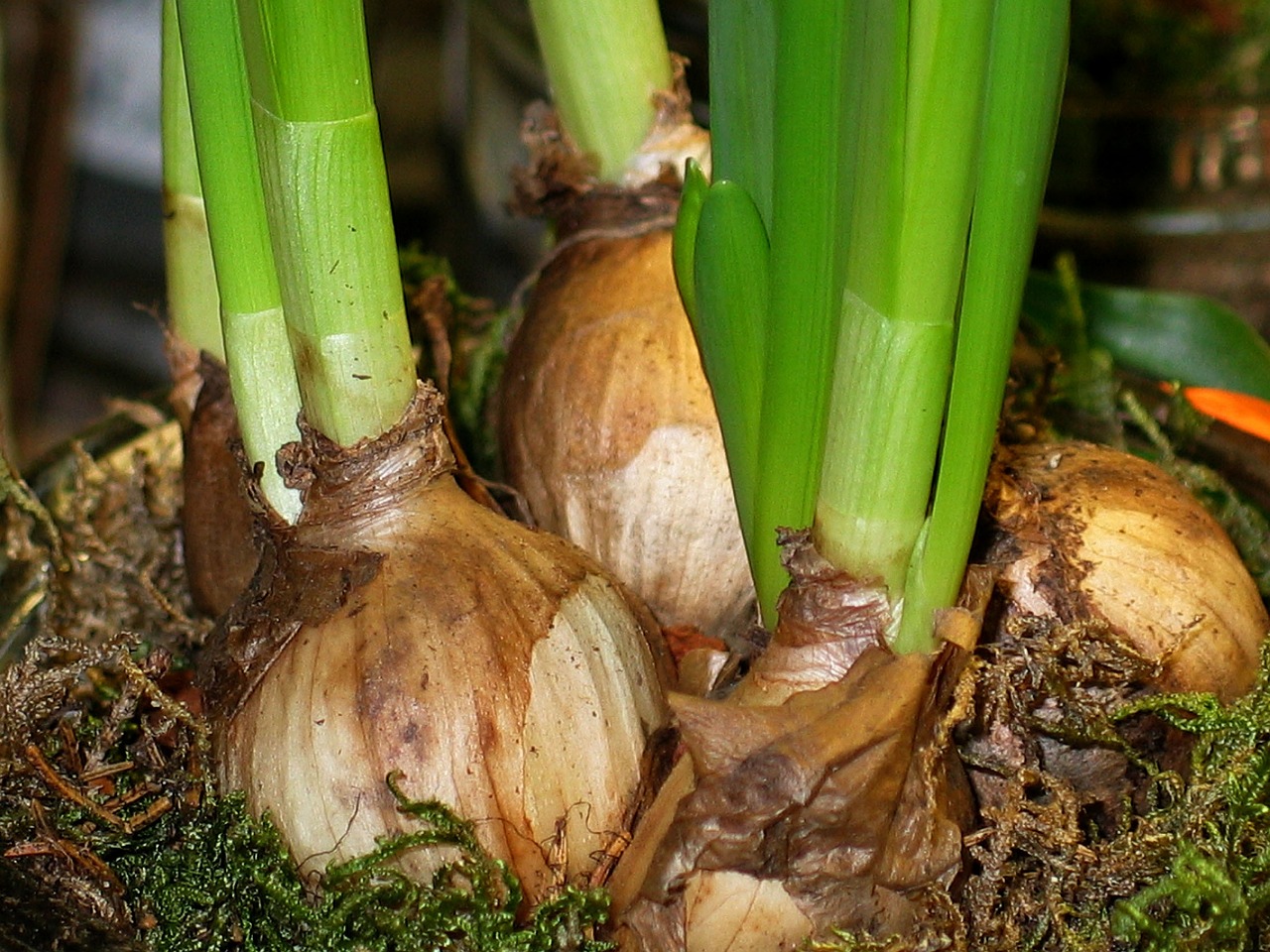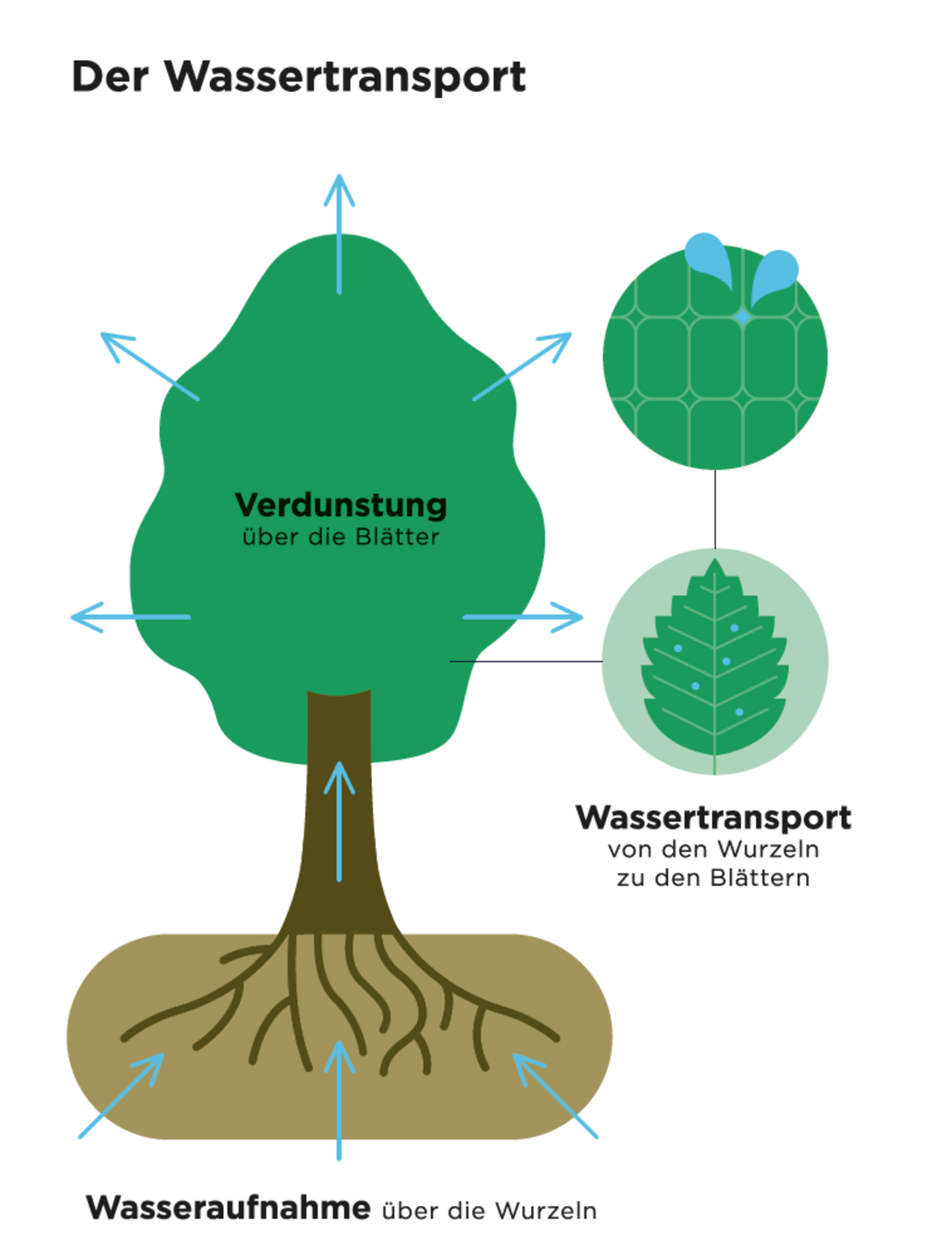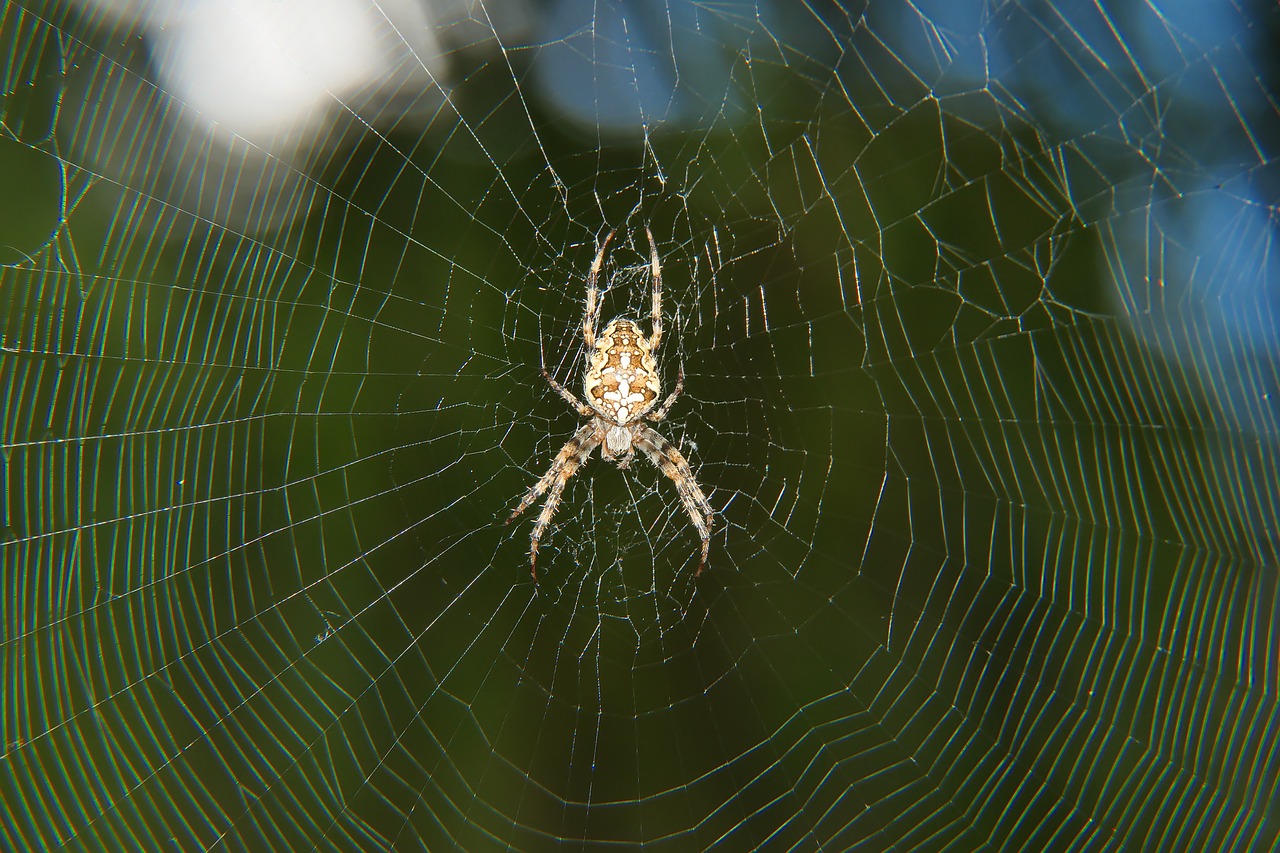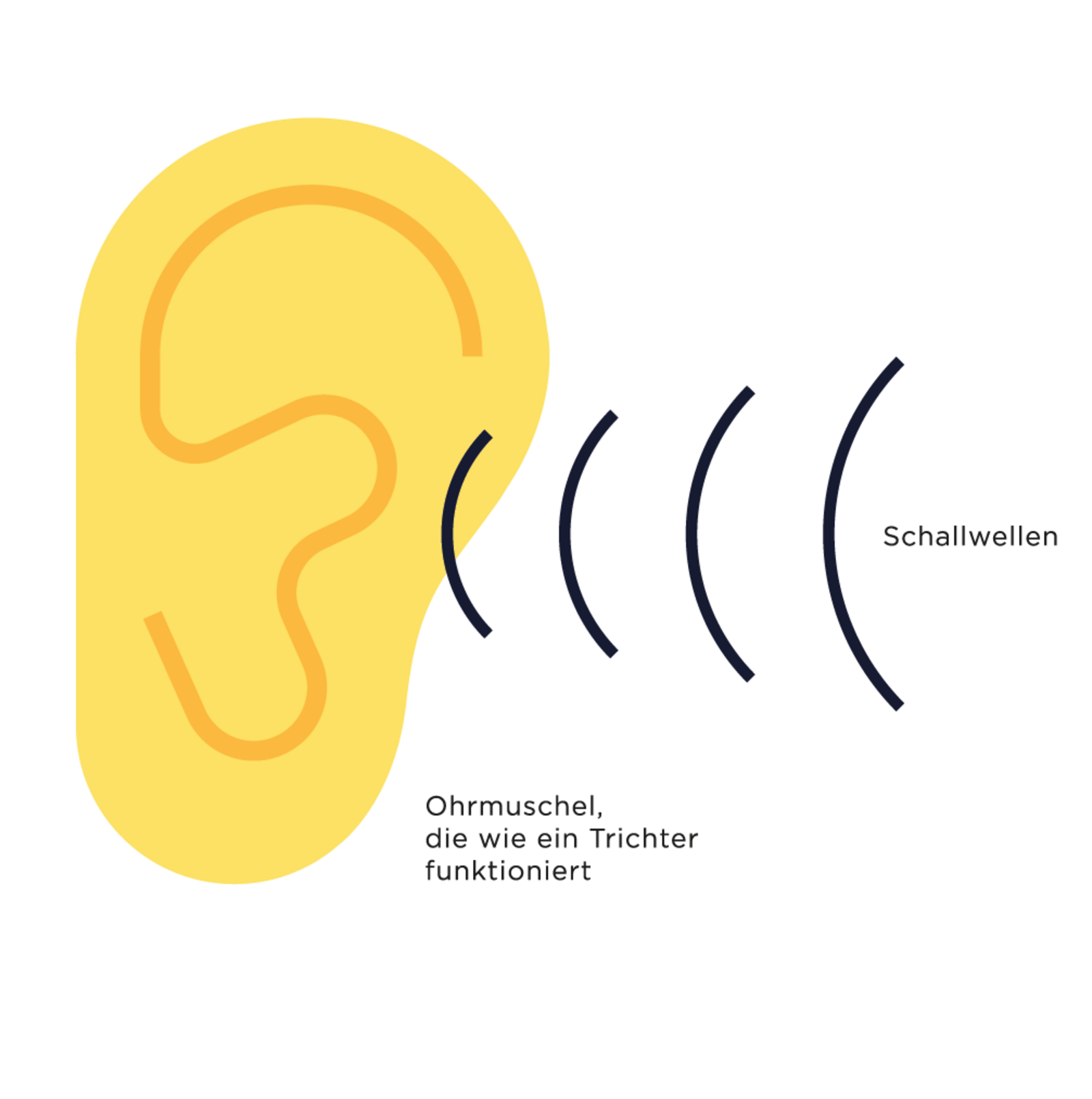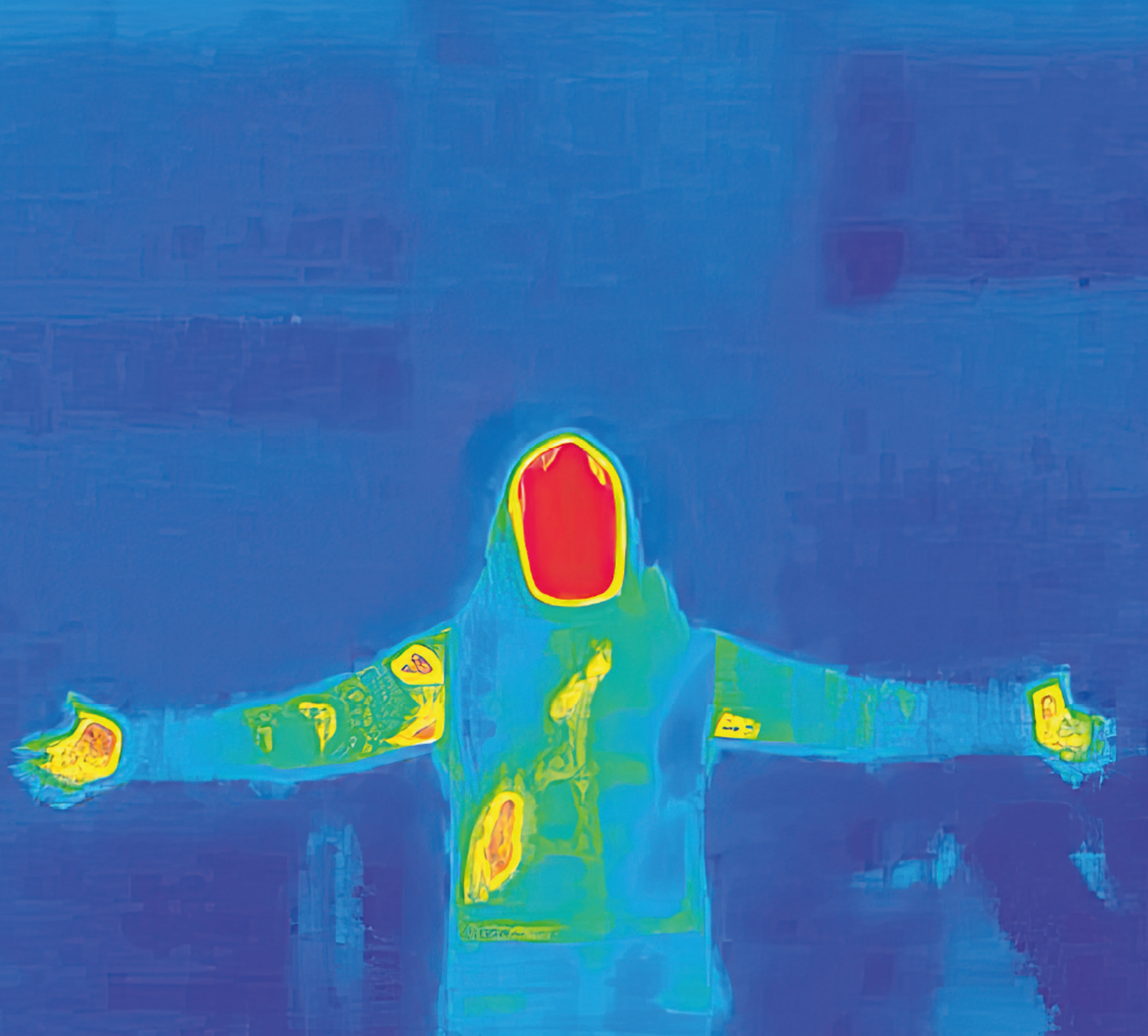Loop Wischlingen
Flying gemstone
With its vibrant meadows, ancient trees, and the presence of a lake, Revierpark Wischlingen provides a diverse habitat for numerous bird species. Its proximity to the Hallerey nature reserve also makes it an intriguing location for birdwatching.
One species of bird is particularly eye-catching: the kingfisher, with its iridescent blue-orange plumage, reminiscent of a flying gemstone. It mainly feeds on small fish and requires nutrient-rich and clean waters. With its very keen eyes and a type of natural diving goggles, the kingfisher is an excellent hunter. It can see sharply underwater and catches a fish with nearly every plunge.
In addition to the striking kingfisher, you can observe various other bird species around the lake. Among them are typical water birds that have adapted well to life in and around water, thanks to their waterproof feathers, webbed feet, and other distinctive features. With a bit of luck, you might catch sight of it or other birds through the telescope. Alternatively, you can peer through the periscope like a submarine or use the microscope to observe everything in detail.
On the nature trail, you will experience Revierpark Wischlingen from the perspective of different creatures and discover their habitats. Hang out like a bat or jump like a frog - this trail shows you the environment from a new perspective.
Let's go! Take a look in the mirrors and observe closely! Can you spot things that you didn't notice before?
Keep also an eye out for the following species:
Mallard
Mallards are indeed a common species of bird. The male mallards, known as drakes, display magnificent plumage. They have a grey-brown body, a white ring around their neck, and a glossy green head.
On the other hand, the females have inconspicuously patterned brown feathers, which help them camouflage during the breeding season. Mallards often search for food by dabbling.
They dip their heads and necks into the water to reach the bottom and find their food. This behaviour is reminiscent of the popular nursery rhyme that goes, "All my ducklings swimming on the lake, heads in the water, little tails up in the air!"
weiße Schachtel
Coot
The coot gets its German name"Blässhuhn" from the word "Blässe” (pallor) which refers to the white spot on its forehead, known as the "horn shield”. Coots have distinct features such as red eyes and black plumage. They have swim flaps on their feet, which facilitate their swimming abilities.
Their feet are relatively large, balancing their weight well and allowing them to walk on water lilies. Coots typically construct their nests in reeds or on floating plants.
Grey heron
The grey heron is a large heron species native to domestic regions. It exhibits predominantly grey and white plumage, with elongated black crown feathers on its head.
Grey herons are commonly found in the vicinity of water and primarily feed on fish. They frequently form breeding colonies in tall trees located near water.
Cormorant
The cormorant is characterised by its black plumage and a hooked beak. It is an exceptional diver. Unlike most birds that live on and in the water, it does not possess the ability to grease its feathers. As a result, it must dry its plumage after every dive.
For this purpose, it looks for a resting place, spreads its wings and dries them in the wind and sun.
Greylag goose
The domestic greylag goose displays grey-brown brindled plumage and is considered the wild predecessor of the domesticated goose. These geese thrive in the surroundings of the Revierpark, particularly enjoying the pond and the adjacent meadows.
During the breeding season, greylag geese form pairs and live together. Upon hatching, the goslings remain in the nest and memorise the image of their parents, who they will subsequently follow.
Black-headed gull
Their flight call resembles laughter and can be heard from the Hallerey nature reserve, far away - especially when they gather in groups. Gulls are highly adaptable birds that can be found not only along the coast but also inland.
They are known to settle near human settlements and garbage dumps, which provide them with a steady source of food.
Underwater world
The lake in Revierpark Wischlingen is home of a wide variety of species. It encompasses diverse habitats that support animals and plants. The shoreline is adorned with reeds and other aquatic plants, providing shelter and refuge for numerous creatures, including dragonflies, frogs, and newts. The open water is primarily inhabited by various fish species, such as carp, roach, catfish, and pike.
The lake's bottom is home to mussels, snails, worms, and water insect larvae.
Can you spot the following species?
Mosaic dragonfly
Dragonflies are closely connected to aquatic environments, and the Revierpark lake is no exception. Among the dragonfly species found here are the stunning mosaic dragonflies, with their shimmering blue-green appearance. They can be observed near the water's edge as they search for food, mate, and lay their eggs.
Dragonfly larvae are commonly found underwater, where they feed on tadpoles, mosquito larvae, and water fleas. By doing so, they play a crucial role in maintaining the balance of life within the lake.
Water strider
Water striders, belonging to the insect family, are truly fascinating creatures. They have evolved to utilise the unique physical properties of water, allowing them to effortlessly glide across its surface. This enables them to run swiftly, and even manoeuvre in curved paths.
If you observe closely, you may notice tiny dimples on the water's surface as they move. In a way, water striders push against the water's surface, similar to how a person pushes against a trampoline.
Carp
Carp are undeniably the most remarkable and largest inhabitants of the lake. They can grow to astonishing sizes and weight. It is not uncommon to find carp weighing around 5 kilograms, but there are also specimen that exceed 40 kilograms. These giants leisurely glide through the waters, diligently scavenging for worms, snails, and insect larvae.
However, their calm appearance is deceiving! With the help of their swim bladder and teeth located in their throat, they are capable of producing sounds. By submerging a special microphone in the lake, you would discover that fish can be quite talkative.
River and pond mussels
The river mussel, also known as freshwater mussel, is commonly found in rivers, streams, and lakes. Growing up to 20 cm in size, it possesses an elongated, oval shape. Its coloration typically ranges from brown to black.
Despite the perception that mussels remain stationary, they are actually quite mobile. By rapidly opening and closing their shells, they are able to expel water and propel themselves forward.
Another mussel, which appears in Wischlingen, is the pond mussel. The pond mussel is able to filter an astounding three litres of water per hour while filtering nutrients out of the water. That's how it finds its food while keeping the water clean. Look through the underwater viewers and switch the light on for an even better view.
Big jumps
Frogs can live on land and in water. In spring, they mate in the lake and start spawning. The eggs lain by the female frog into the water are referred to as spawn. In the picture, you can see the development of the frog from spawn to the fully grown animal.
Frogs can jump incredibly well. Just by looking at them, you notice their long and powerful hind legs. However, the strength of their legs alone cannot fully explain their remarkable jumping power. To enable them to jump so far, nature has come up with something clever. It has devised a mechanism that allows frogs to jump long distances while conserving energy.
When a frog prepares to jump, it draws its legs underneath its body, contracting the leg muscles and stretching the tendons. As the frog propels itself into the air, the energy stored in its tendons is released, transferring power to its legs. This can be likened to a bow shooting an arrow forward. With each jump, the tendons provide additional energy, allowing the frog to cover greater distances. The remarkable aspect is that tendons, unlike muscles, do not tire easily, enabling the frog to conserve its energy efficiently.
Can you jump like one? Then jump from stone to stone until you reach the water lily. There, you can sit down and watch the life on the lake from the frog's perspective.
Upside down
The German word for bat is "Fledermaus". The first part of the word,"Fleder”, refers to "flutter", which aptly describes the flight capabilities of bats. With their very agile wings, they can perform amazing flying tricks in the night sky. During the day, bats hang upside down in their hiding places. Without any effort, and even while asleep, they cling on thanks to a special gripping mechanism. If they are in danger, they only have to let go and fly away. (If you´re in the park: Hang upside down like a bat or slip into the wings.)
There are 25 bat species in Germany, each with its own habitat preferences. Forests with old trees play a crucial role in providing suitable resting places for many bat species. They find resting spots in tree hollows or gaps in the bark. Other species make use of human structures like buildings for shelter. In addition to appropriate resting sites, bats rely on an ample food supply. Insects, particularly mosquitoes, are the main source of nutrition for domestic bats. Bodies of water, rich in insects, often attract them.
Revierpark Wischlingen offers favourable living conditions for various bat species, such as the common Pipistrelle, Daubenton's bat, Leisler's bat, or the common Noctule. They are strictly protected, and preserving their habitats is of utmost importance. When observing bats, it is essential not to disturb them. From November to March, bats hibernate, awakening with the arrival of spring's first rays of sunshine. Being nocturnal creatures, bats emerge from their hiding places only at nightfall. They possess the ability to echolocate, using high-frequency sounds to navigate in the darkness and locate food. These ultrasonic sounds travel through the environment and bounce back when they encounter an object or prey, allowing bats to calculate distances. These sounds are inaudible to humans, but specialised devices like bat detectors can make them audible to us.
Participating in a bat tour can be an excellent opportunity to acquaint yourself with the flying artists of the night.
Showcase Nature
Life abounds in every corner - even amidst the sand and stones or within decaying wood. You will find many different plants and animals in the smallest spaces, even in the flower beds. They have all adapted perfectly to the challenges of their respective habitats.
Plants are indeed remarkable in their ability to adapt to various environmental conditions. They can thrive in different types of soil, climates, altitudes, and even adjust to varying light conditions. They exhibit a wide range of adaptations, including modifications in leaf structure, root systems, coloration, size, and many more.
In the plant rooms area, different conditions have been recreated to mimic various native habitats in a small space. You can use the loungers to closely observe the different areas and look for differences in leaf shape, size, as well as the texture of leaves and stems.
Furthermore, there are various animals to observe in this area, ranging from beetles to butterflies, bees, bugs, ants, spiders, and more.
Examples of typical adaptations:
Pasque flower
The pasque flower is a plant that can tolerate dry habitats. Its German name "Kuhschelle" derives from the similarity of its flowers to the bells ("Schellen") that a cow ("Kuh") wears around its neck. In wet weather, the plant uses a trick. Its fruits interlock on passing animals and can spread in this way. If the weather fluctuates between wet and dry, the fruits themselves exhibit a remarkable ability to move slightly on their own. They stretch and elongate repeatedly, resembling the movements of a caterpillar.
Crocus
Crocuses are classified as geophytes, possessing a round tuber beneath the soil that functions as a storage organ. Just as a camel stores nutrients in its humps, crocuses store water and nutrients in their bulbs. They typically bloom in the rainy spring season and safeguard themselves underground throughout the dry summer.
Water Forest
Just like all living beings, trees also need water to survive. Through a specialised system of tubes, water and nutrients are transported from the soil up through the roots, trunk, and branches, reaching every single leaf. It evaporates through tiny openings on the underside of the leaves, thereby cooling the surrounding environment.
Here at the Water Forest, you can imitate the trees and use your muscle power to transport the water upwards. Use the pumps and feel the cooling effect.
Web Worlds
There are approximately 1000 species of spiders in Germany, each with its own unique characteristics.
One of the most well-known native spiders is the garden spider, which is easily identified by the white cross on its back. You have probably encountered their impressive wheel-shaped webs in nature.
As you may already know, there are various types of spider webs. Spiders use them to catch insects, and thus help nature maintain its balance. However, not all spiders utilise all types of threads; they only use the ones that are suited to their specific lifestyles.
Many spiders weave webs of gossamer threads called spider silk. Spider silk is stronger than steel and more elastic than rubber.
The following list illustrates the different types of threads and purposes for the spiders:
Catch threads
Flies and beetles, for example, get caught on these sticky threads and become entangled in such a tight way that they can't escape from the web.
Radial threads
These threads are the foundational structure that provides stability to the web, preventing it from being blown away by the wind.
Trembling threads
The alarm bell in the spider's web consists of very thin threads that transmit subtle vibrations to the spider when a prey animal becomes entangled. This alerts the spider, allowing it to swiftly reach the prey and envelop it in additional sticky threads.
Cocoon threads
The spider uses very strong special threads to wrap its eggs, providing protection from the environment.
Avoidance threads
Used like a rescue parachute in an airplane. If danger threatens, the spiders abseil down very quickly and are able to hide from an enemy on the ground.
Flying threads
Yes, spiders can actually fly. Young spiders, in particular, use threads as a kind of sail. They produce a thread that is caught by the wind and carries the spider into the air. In this manner, the spider can traverse vast distances, ascending several kilometres into the air and even crossing seas.
Audible
The human ear is an incredible organ. It can distinguish a total of 400,000 different sounds.
But without sound, we wouldn't be able to hear anything. So, what exactly is sound? It is the movement of air particles in waves. It is produced by a sound source, such as a hand clap or your voice, causing nearby particles to vibrate. This chain reaction continues until the sound waves reach your ears.
With the funnels, you can amplify your ear's ability to capture sounds and hear the park more clearly. Close your eyes and listen: what can you hear?
Visible
With a thermal imaging camera, you can observe the temperature variations in your environment, such as a tree, the ground, or your hand. The temperature is displayed using different colours. Red indicates warmth, yellow and green indicate moderate temperatures, and blue represents coldness.
When using a thermal imaging camera, plants typically appear blue, even in the summer. This is because the water evaporating through their leaves causes them to be cooler. This phenomenon is known as "evaporative cooling." You may be familiar with a similar concept when we sweat, which helps cooling our bodies down. On the other hand, stones and concrete cannot retain water, but they can absorb and store the thermal radiation from the sun. Therefore, in summer, they appear more red on the thermal camera. However, this can be different in winter.
What do you observe? Look through the camera and search for warm and cool objects. Can you feel the temperature difference with your hands? Stand in front of the camera and see where your body emits heat.

